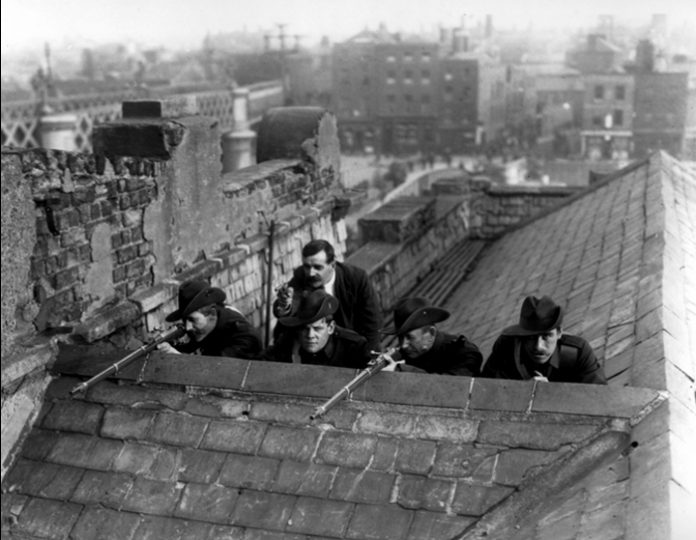
From 1171, King Henry II of England invaded Ireland and forced a part of the Irish princes to recognize him as their sovereign and took the title of “lord of Ireland”. From that time began the systematic assignment of Irish possessions to English lords and the introduction of the English feudal system. In 1542, Henry VIII. occupies the whole island and takes the title of King of Ireland. During the centuries, the Irish rose up several times, with conflicts especially intensified at the end of the 16th century when Protestantism was tried to impose on the Irish and lasted until the 20th century when the bloody Anglo-Irish War, also known as the Irish War of Independence, broke out.
Specifically, representatives of the Irish Sinn Fein Party won 70% of the seats in Ireland in the British Parliamentary elections of 1918. The following year, they gathered in Dublin and adopted the Declaration of Independence of Ireland on 21 January and set up a government headed by Eamon de Valer, so that date is traditionally taken as the beginning of the conflict. Fighting began with Irish nationalists organized into the Irish Republican Army (IRA), who used guerrilla tactics by attacking police and military units in isolated areas. On the other hand, the British used paramilitary formations, which came to be known by volunteers from Britain known as Black and Tans. The war escalated in November 1920 when, with the exception of military action, both sides began mass executions of civilians, especially in Ulster. In Britain, which has been recovering economically and psychologically since World War I, the conflict in Ireland has over time become extremely unpopular. Her Government therefore agreed to the ceasefire which had been proclaimed on 11 May 1921. Months of negotiations followed that resulted in a compromise in December of the same year by the signing of the Anglo-Irish Agreement. The treaty divided Ireland into a southern part – Ireland – a free state as the de facto independent British domion and Northern Ireland (six Protestant counties) which remained under the immediate British rule.
With the new constitution of December 29, 1937, the Free State of Ireland changed its name to Ireland (since 1949 the Republic of Ireland) and unilaterally proclaimed its sovereignty and independence and established the position of President of the Republic. The United Kingdom only accepted these decisions in 1945.




